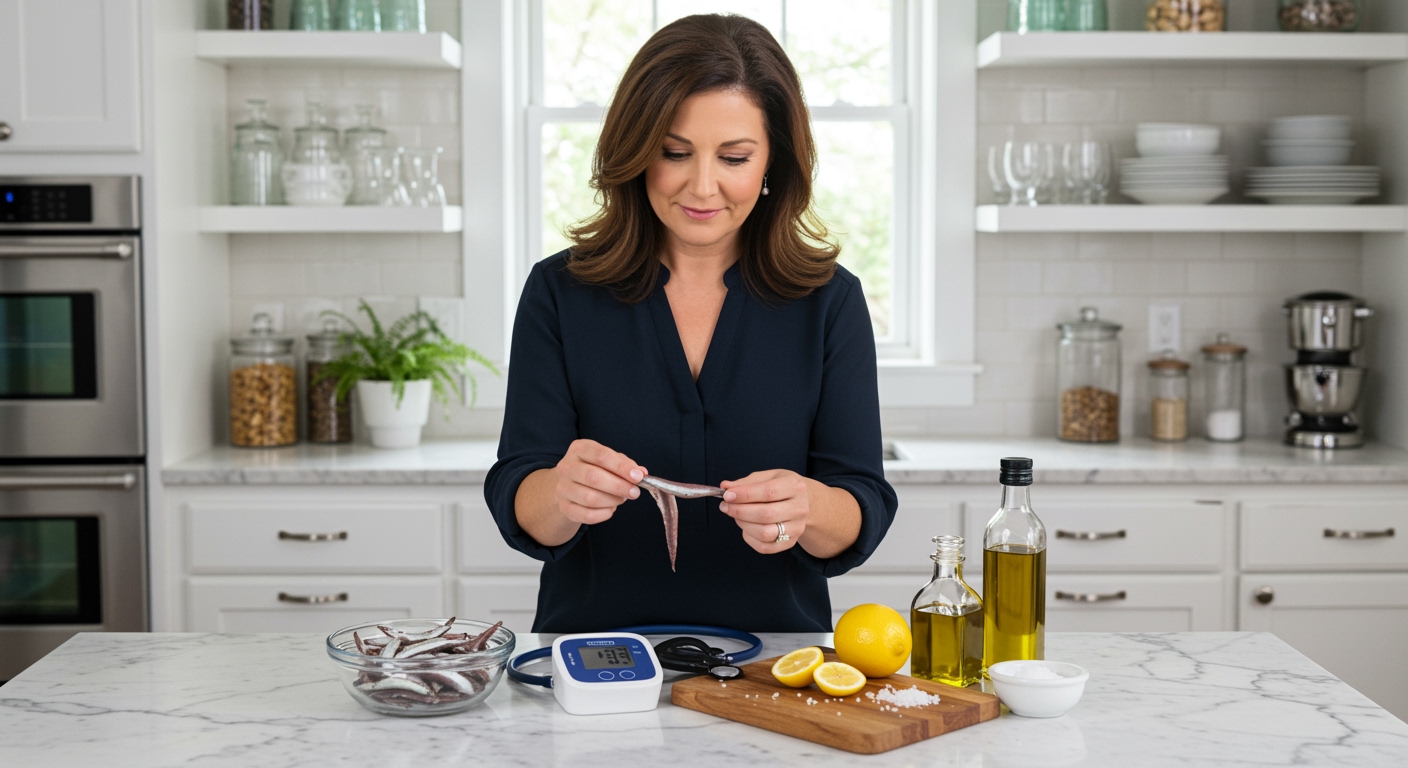✪ Key Takeaway: Excessive fiber intake can worsen hypotension by reducing blood volume and interfering with mineral absorption.
Introduction
Your doctor tells you to eat more fiber for better health, but your blood pressure keeps dropping lower.
You might be wondering if that extra fiber in your diet could actually be making your hypotension worse instead of better.
Hi, I’m Abdur, your nutrition coach and today I’m going to explain exactly how too much fiber can worsen low blood pressure and what you can do about it.
How Does Fiber Actually Affect Blood Pressure?
Fiber works in your digestive system by absorbing water and forming a gel-like substance that slows down digestion.
This water absorption process can significantly impact your blood volume, which directly affects blood pressure.
When you consume large amounts of fiber, it pulls water from your bloodstream into your intestines to help with the digestion process.
This reduction in blood volume means your heart has less fluid to pump through your circulatory system.
For people with normal or high blood pressure, this effect might be beneficial, but for those with hypotension, it can make symptoms significantly worse.
The mechanism becomes even more problematic when you consider that fiber also affects how your body absorbs essential minerals like sodium and potassium.
✪ Fact: Soluble fiber can reduce blood volume by absorbing up to 10 times its weight in water.
What Happens When You Eat Too Much Fiber With Hypotension?
Excessive fiber intake creates a perfect storm of effects that can worsen hypotension symptoms dramatically.
First, the high fiber content binds to minerals like sodium and magnesium in your digestive tract, preventing proper absorption.
Sodium plays a crucial role in maintaining blood pressure by helping your body retain water and maintain proper blood volume.
When fiber interferes with sodium absorption, your body loses its ability to maintain adequate blood pressure levels.
Additionally, the water-absorbing properties of fiber can lead to mild dehydration if you do not increase your fluid intake proportionally.
This dehydration further reduces blood volume, creating a compounding effect that makes hypotension symptoms like dizziness, fatigue, and fainting more likely to occur.
✪ Pro Tip: Monitor your symptoms closely when increasing fiber intake and adjust portions based on how you feel.
Which Types Of Fiber Are Most Problematic For Low Blood Pressure?
Soluble fiber poses the greatest risk for people with hypotension because of its powerful water-absorbing capabilities.
Foods high in soluble fiber include oats, beans, apples, and psyllium husk supplements, which are often recommended for digestive health.
These foods can absorb massive amounts of water from your digestive system, potentially leading to significant drops in blood volume.
Insoluble fiber, found in whole grains and vegetables, is generally less problematic but can still contribute to mineral binding issues.
The timing of fiber consumption also matters significantly for people with hypotension concerns.
Consuming large amounts of high-fiber foods on an empty stomach can create more dramatic effects on blood pressure than spreading fiber intake throughout the day.
✪ Note: Fiber supplements are more concentrated than whole foods and can cause more dramatic blood pressure effects.
How Much Fiber Is Safe If You Have Hypotension?
The standard recommendation of 25-35 grams of fiber per day might be too aggressive for people dealing with hypotension.
Starting with 15-20 grams daily allows your body to adjust while minimizing the risk of worsening symptoms.
You should increase fiber intake gradually, adding just 2-3 grams per week while monitoring how your body responds.
Pay close attention to symptoms like increased dizziness, fatigue, or lightheadedness after meals high in fiber.
If you notice these symptoms worsening, reduce your fiber intake and focus on getting fiber from whole food sources rather than supplements.
Remember that individual tolerance varies significantly, and what works for others might not work for your specific situation with hypotension.
✪ Pro Tip: Keep a food and symptom diary to identify your personal fiber tolerance level.
What Should You Do If Fiber Is Worsening Your Hypotension?
First, reduce your fiber intake temporarily to see if your hypotension symptoms improve within a few days.
Focus on getting fiber from easier-to-digest sources like cooked vegetables rather than raw ones or high-fiber cereals.
Increase your water intake significantly when consuming fiber-rich foods to help maintain proper blood volume.
Consider spacing out your fiber consumption throughout the day rather than consuming large amounts in single meals.
Work with your healthcare provider to find the right balance between getting adequate nutrition and managing your hypotension effectively.
They might recommend specific dietary modifications or monitoring strategies that work better for your individual health situation.
✪ Note: Never stop eating fiber completely, as it provides important health benefits when consumed in appropriate amounts.
The Bottom Line
Too much fiber can indeed worsen hypotension by reducing blood volume and interfering with mineral absorption that your body needs to maintain healthy blood pressure.
The key to good nutrition is finding balance, not following blanket recommendations that ignore your individual health needs.
I would love to hear about your experiences with fiber and blood pressure in the comments below, and feel free to ask any questions you might have about managing your hypotension through dietary choices.
References
At NutritionCrown, we use quality and credible sources to ensure our content is accurate and trustworthy. Below are the sources referenced in creating this article:
- PMC: Dietary Fiber and Blood Pressure
- Healthline: Too Much Fiber
- Medical News Today: Hypotension
- PMC: Fiber and Cardiovascular Health





